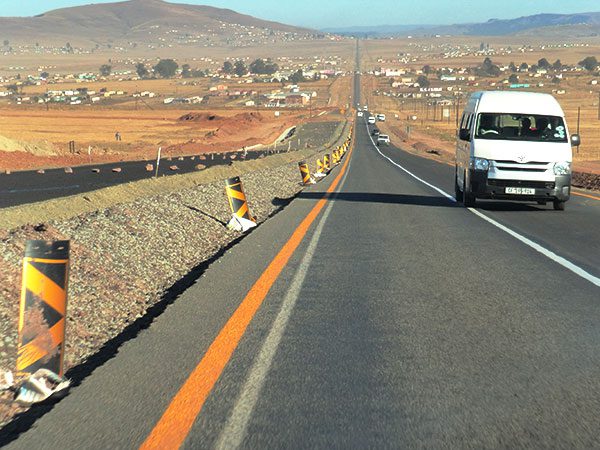
JG Afrika was involved in the successful upgrade of a 36 km section of the R61 and an 18 km section of the arterial between Coughlan and Baziya in the Eastern Cape.
We were appointed by the South African National Roads Agency Limited (SANRAL) to provide engineering and design, as well as construction supervision services for the first phase of a R1-billion project that forms part of the main route between Queenstown and Mthatha, the poorest region of the province.
The first phase of the works was valued at about R420-million and entailed an extensive upgrade that raised the aged infrastructure to modern standards.
First built in the 1950s and reconstructed in the 1976, the R61 traverses rolling topography with many blind rises. Road safety levels on the extremely narrow road were notoriously poor, and are intensified by the lack of surfaced shoulders and poor driver behaviour.
The existing road was upgraded to provide a carriageway with two 3,7 m lanes and 2,5 m surfaced shoulders, while the aged pavement was completely replaced with conventional layers and a Cape Seal surface.
Meanwhile, the ground line of this section of the road corridor was significantly improved, involving major cut-to-fill operations with one of the excavations up to 10 m deep.
The project also entailed major structural work, including an impressive three-span crossing over the Mbashe River. Standing 18 m above the river, one of the bridge’s two piers was founded on piling that was sunken 8 m down to the river bedrock.
In addition to the three bridges, other structures include three 3m x 3m agricultural underpasses, as well as a single 2,4m x 2,4m, a double-, a triple- and a quadruple-barrel cast in-situ concrete culvert.
The construction works were let out to Aveng Grinaker-LTA, which started work on the project in 2015.
One of the complexities of this project was mitigating the impact of construction activities on the daily heavy traffic, which includes cement-laden trucks, tour busses and mini-bus taxis.
The challenge was compounded by the undulating terrain and impatient driver behaviour. Safety was a major priority right from outset when a series of temporary bypasses were constructed to divert two-way traffic to the one side of the road to allow work to commence on the other side.
Surfacing activities were divided into two phases. The first entailed providing a Cape Seal with only one slurry layer for half the road width, road marking it and opening it to two-way traffic. Road users were diverted to the other half of the road once completed to allow the construction teams to place the final slurry layer.
The project also entailed close and ongoing interaction with members of communities, while the professional teams also had to contend with the extremely erosive mudstone found in the area where four borrow pits were opened to supplement fill and selected material. A hard rock quarry was also opened that provided surfacing stone, base material, subbase material and concrete aggregate.
